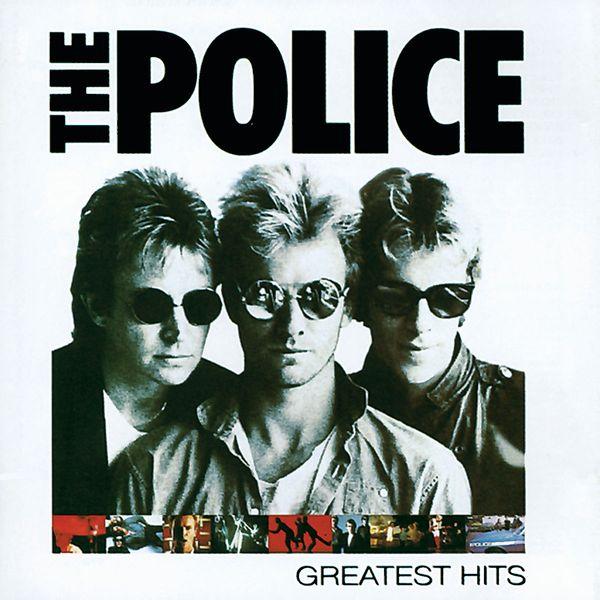Nearly five decades ago, The Police shattered conventional music boundaries with their 1979 hit, making chart history in a way that still resonates today. As one of the defining tracks of the late 1970s, this song not only propelled the band into international stardom but also left an indelible mark on the evolution of rock and new wave music. Yahoo takes a closer look at how this groundbreaking single changed the musical landscape nearly 50 years ago and continues to influence artists and fans alike.
The Police’s 1979 Hit Revolutionized the Music Charts With Its Unique Sound
In 1979, The Police broke new ground with a track that defied the conventional sounds dominating the airwaves. Their innovative blend of rock, reggae, and punk elements created a fresh auditory experience that captivated audiences worldwide. Unlike anything else at the time, the song’s rhythmic complexity and melodic hooks elevated the band from underground favorites to mainstream chart-toppers, marking a pivotal moment in music history.
Several factors contributed to the song’s unprecedented success, including:
- Distinctive instrumentation: A signature mix of sharp guitar riffs and pulsating bass lines
- Engaging lyrics: Themes resonating with the cultural shifts of the late ’70s
- Innovative production: Techniques that enhanced its radio appeal without sacrificing artistry
Below is a quick look at the song’s impact compared to other top hits of 1979:
| Song | Months on Chart | Peak Position | Notable Feature |
|---|---|---|---|
| The Police’s Hit | 16 | 1 | Genre-blending |
| Contemporary Hit A | 12 | 3 | Classic rock style |
| Contemporary Hit B | 14 | 2 | Disco influence |
How This Groundbreaking Track Influenced the Future of Rock and New Wave
The track’s fusion of punk energy and reggae rhythms paved the way for a fresh sonic landscape that challenged the conventions of late 1970s rock. By integrating syncopated basslines with atmospheric guitar riffs, it redefined how bands could experiment within the genre without losing mainstream appeal. This innovative approach inspired a wave of musicians to explore eclectic influences, contributing significantly to the emergence of new wave as a dominant force in the 1980s music scene. The Police not only bridged diverse musical styles but also set a precedent for blending introspective lyricism with infectious melodies, a hallmark that many artists sought to emulate in the decades that followed.
The ripples of this groundbreaking hit are evident in the way chart-topping artists evolved their sound, embracing both technical complexity and pop sensibility. Its impact went beyond just music; it altered production techniques and stage performances, encouraging a generation to prioritize atmosphere and mood. Below is a snapshot of how key elements from this track influenced future rock and new wave characteristics:
- Rhythmic Innovation: Syncopation and offbeat accents became central features.
- Textural Experimentation: Use of layered guitars and reverb-enhanced vocals.
- Lyrical Depth: Combining personal themes with social commentary.
- Cross-Genre Appeal: Seamless blend of rock, reggae, and pop elements.
| Feature | Pre-1979 Rock | Post-1979 Evolution | |||||||
|---|---|---|---|---|---|---|---|---|---|
| Instrumentation | Guitar-driven, straightforward | Incorporated reggae beats, richer basslines | |||||||
| Song Structure | Verse-chorus repetition | Dynamic shifts and atmospheric bridges | |||||||
| Production Style | Raw, live sound | Polished, layered with effects | |||||||
| Audience Impact | Rock-centric listeners | Broadened appeal to pop and alternative fans |
| Feature | Pre-1979 Rock | Post-1979 Evolution | |||||||
|---|---|---|---|---|---|---|---|---|---|
| Instrumentation | Guitar-driven, straightforward | Incorporated reggae beats, richer basslines | |||||||
| Song Structure | Verse-chorus repetition | Dynamic shifts and atmospheric bridges | |||||||
| Production Style | Raw, live sound | Polished, layered with effects | |||||||
| Strategy | Modern Application |
|---|---|
| Genre Fusion | Collaborate across styles, e.g., hip-hop with indie rock |
| Authentic Storytelling | Leverage social media for personal narrative sharing |
| Visual Branding | Create cohesive digital content and imagery |
| Flexible Touring | Combine livestreams with physical shows for wider reach |
Insights and Conclusions
Nearly five decades after its release, The Police’s 1979 hit continues to resonate as a milestone in music history, reflecting the band’s innovative sound and enduring influence. As the song’s chart success paved the way for future artists, it remains a testament to the era’s vibrant musical landscape. This enduring legacy underscores why The Police’s breakthrough single still holds a significant place in the annals of popular music.
